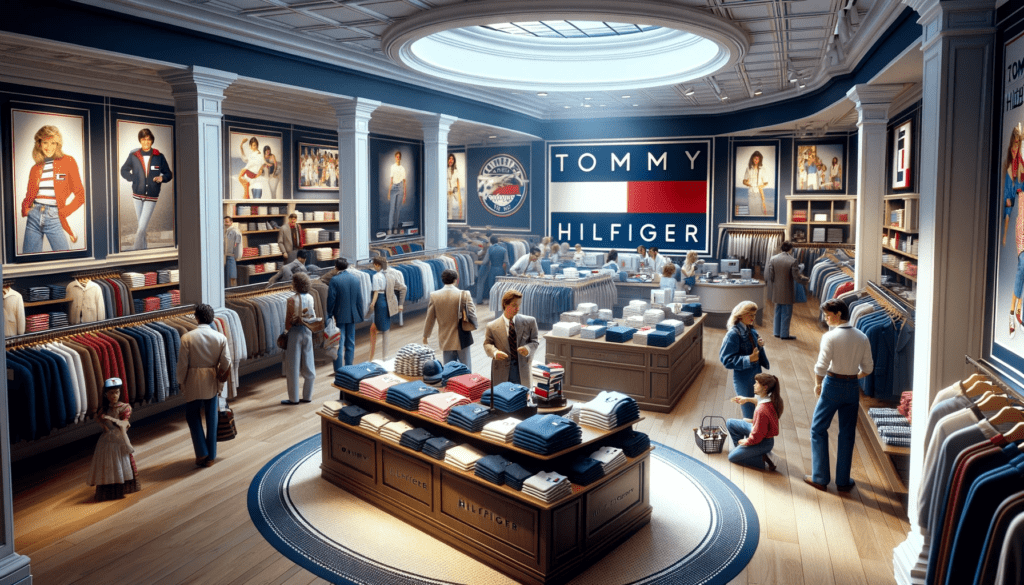The Journey of Tommy Hilfiger: From Start to Global Brand
The Early Years of Tommy Hilfiger
In the 1970s, a young fashion designer named Tommy Hilfiger took his first steps in the fashion world. With a natural talent for style and an eye for trends, Hilfiger began his career tailoring and reselling jeans and other clothing in New York. His unique approach to fashion, which combined classic American styles with modern influences, quickly attracted attention.
The Emergence of a Brand
Launched in 1985, the Tommy Hilfiger brand immediately became a symbol of the preppy lifestyle. The combination of quality, style and youthful energy in Hilfiger’s designs proved to be a formula for success. With its iconic flag logo, Tommy Hilfiger quickly became a recognizable brand in the fashion world.
Tommy Hilfiger: The Man Behind the Brand
Born in 1951, grew up in Elmira, New York. He developed an interest in fashion and entrepreneurship at an early age. His perseverance and creativity were essential to building his brand, which would carry his name and become known worldwide.
Expansion and Growth
Throughout the 1990s and early 2000s, the brand continued to grow, both in range and geographic reach. Tommy Hilfiger expanded into women’s clothing, children’s clothing, perfumes, and even home decor, establishing itself as an all-encompassing lifestyle brand.
Where Is Tommy Hilfiger Clothing Made?
Tommy Hilfiger’s clothing is produced worldwide. The brand strives to maintain ethical and sustainable manufacturing practices, with factories in countries such as China, Vietnam, and Bangladesh. The company is committed to corporate social responsibility and constantly works to improve working conditions in its factories.
Price range of his branded clothing
Tommy Hilfiger is known for its high-quality clothing and accessories, positioned in the mid-market segment. Prices vary, with casual garments generally affordable, while more luxurious items such as tailored suits and leather goods fall into a higher price range. The price range reflects Tommy Hilfiger’s quality and brand prestige.
In conclusion:
Tommy Hilfiger is not just a name in the fashion world; it is a cultural phenomenon that embodies the essence of American style. The brand has always differentiated itself by its ability to blend classic fashion with contemporary trends, staying relevant in a rapidly changing industry. This approach has earned the brand a loyal following that spans generations.
In addition to fashion, he has championed social and environmental issues. The brand has launched several initiatives to promote sustainability in the fashion industry. This includes using recycled materials, reducing water use, and working toward a more ethical supply chain. This commitment to sustainability reflects a growing awareness within the fashion world about its impact on the planet and communities worldwide.
Tommy Hilfiger has also revamped the way fashion is presented and sold. With early adoption of digital technologies and social media, the brand has effectively catered to the digital generation. Through innovative campaigns and collaborations with celebrities and influencers, Hilfiger has reached a wide and diverse audience.
Tommy Hilfiger’s influence goes beyond clothing. The brand has played an important role in music, art and culture. Collaborations with artists and cultural icons have given the brand a unique place in pop culture. This synergy between fashion and culture has contributed to the brand’s iconic status.
At its core, Tommy Hilfiger remains true to its original vision: fashion that is fresh, accessible and progressive. While the brand continues to evolve and adapt to new trends and challenges, it remains true to the values of quality, individuality and a decidedly American spirit. With Tommy Hilfiger at the helm, the brand remains a model of innovation and timeless style in the fashion world.
Tommy Hilfiger and Calvin Klein: Financial Performance of PVH Corporation
Tommy Hilfiger and Calvin Klein, both iconic fashion brands and part of PVH Corporation, are known for their distinctive styles. Both brands have contributed significantly to PVH Corporation’s development in the fashion industry.
| Year | PVH Corporation sales (in billions) |
|---|---|
| 2019 | $9,657 |
| 2020 | $9,909 |
| 2021 | $7,133 |
| 2022 | $9,155 |
| 2023 | $9,024 |
These turnovers reflect the combined performance of all brands under PVH, including Tommy Hilfiger and Calvin Klein. The fluctuations in sales indicate the dynamic nature of the fashion market and the impact of external factors such as global economic changes.




Leave a Reply